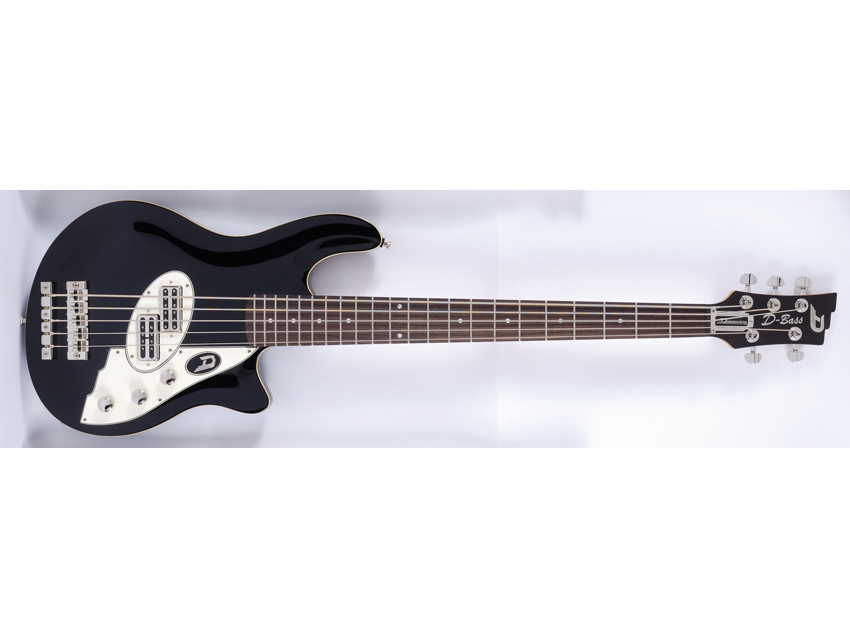MusicRadar Verdict
If you want something a little different this is a great place to start: a serious five-string without a whiff of muso.
Pros
- +
Unique original retro looks; individual sound quality.
Cons
- -
Of course, not every one will like the style…
MusicRadar's got your back
In the bass world Duesenberg is more distinctive. The design style can polarise opinion, but in a market where most instruments show allegiance to fifties classics it stands out as a true original.
This new D-Bass is available in the regular four-string format but this five-string beauty immediately grabbed our attention.
The bound alder body features a stylishly contoured top with a practical rear body scoop, a slightly extended upper horn and trademark stepped headstock with those unusual guitar-sized tuners.
Although compact, these sealed units work beautifully, as does the separate bridge and tailpiece that feature prominently on the body.
The Toaster pickups sit within their own oval surrounding plate that nestles within the larger scratchplate echoing the stepped design to good effect.
As the jack socket is edge-mounted this plate holds just the three controls and that distinctive Duesenberg 'D' logo that makes the whole thing cohesive and neat.
The simple looking solid brass bridge is a very efficient unit with tough saddles and good adjustability. There is enough movement to allow optimisation of the speaking length of the strings with the low B reaching almost 876mm (34.5-inches).
The maple neck is satin smooth with a flattened profile and the rosewood 'board has slightly rolled edges, pearl dots and pretty big frets with a more than acceptable string spacing.
We should also mention the nut, which on this D-Bass is beautifully shaped and smoothly rounded at the edges.
The smaller headstock and downsized tuners assist in better instrument balance and reduce overall weight - what's not to like?
Sounds
With a robust sound and one of the most powerful bottom Bs we've encountered, the D-Bass seems intent on leaving its sonic mark. The combination of tone and mid-range controls gives an inherent sound that is as individual as the looks.
The split Toaster pickup and unusual circuit supply a bottom end that is both big and full with a good definition throughout, but with the added advantage of series or parallel wiring we also get a brighter, more focused delivery when switched from series to parallel.
There's not, of course, the scope of sound you'd expect from a modern active bass but there's plenty of variation on hand to make this a great all-rounder with a bigger voice than you might imagine - and that B-string will appeal even to metal monsters.
As the first full-scale Duesenberg bass, the D-Bass joins the range in quite dramatic style. Yes, Duesies are all about visual style but it's nothing without tonal substance and the D-Bass delivers in both the playability and tone.
“I have an original 909 – every time I try to use it I feel like I’m ruining it”: House hero Riva Starr on his studio essentials and his love of analogue synths
“A synthesizer that is both easy to use and fun to play whilst maintaining a decent degree of programming depth and flexibility”: PWM Mantis review
“I feel like that song had everything we needed to come back with”: Bring Me The Horizon’s Lee Malia on Shadow Moses, its riff and the secrets behind its tone, and why it was the right anthem at the right time










